The early history of Polish semiconductors has the following key dates are:
- 1953/4 : the first Polish point-contact transistors were made.
- 1958 : two semiconductor factories were created: TEWA and PEWA.
- end of 1950s : the first Polish junction transistors were developed and commercialised.
- 1961 : the PEWA plant was incorporated into TEWA
- 1970 : CEMI (Scientific and Production Center for Semiconductors) was established, an organizational unit bringing together all the basic units dealing with Polish semiconductors. TEWA was absorbed into this.
- ???? : CEMI itself became part of Unitra, the Association of Polish consumer electronics manufacturers.
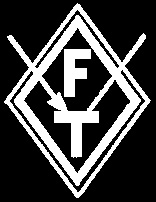
The 'fabryka tranzystorów' ('transistor factory'), called TEWA, was founded in 1958 from an R&D branch of the Polish Ministry of Communication. The TEWA logo is shown on the right, and is a transistor symbol in a diamond with the letters F and T in it (for 'fabryka tranzystorów'). The other manufacturer, PEWA 'Zakład Produkcji Półprzewodników Pewa' (something like: Factory for Semiconductor Manufacturing Pewa), had the logo 'ZPP' on some early devices.
An interesting old description of Polish semiconductor manufacturing can be found in a declassified CIA document dated 19 October 1967, entitled 'LEVEL OF TECHNOLOGY AND PRODUCTION OF SEMICONDUCTORS IN THE USSR AND EAST EUROPE'. This states:
'All semiconductors produced In Poland are manufactured by the TEWA Semiconductor Factory. It produces alloy and diffusion type germanium diodes and transistors, rectifier diodes, and a few types of silicon diodes in limited quantity. Substantial quantities of semiconductors are from the Free World and from other Communist countries to compensate for the relatively narrow range of devices that are produced domestically.
By its own admission, Poland is far behind Free World countries in tbe development and production of semiconductors. The quality of Polish produced devices does not measure up to Free World standards. Nevertheless, according to technical evaluation made in the US, Polish germanium transistors are fully adequate for use in low frequency civil electronic end-items.
Substantial research on semiconductors has been underway in Poland since 1962 and some original studies have been carried out on transport phenomena. In addition, the University of Warsaw claims to have developed new methods of diffusing dopants into N-type materials. In 1966 the Baden Institute for Nuclear Research, Warsaw, developed a separation and recovery process for the extraction of germanium from its compounds. Up to this time, Poland hod imported all the germanium required by its semiconductor industry
While Poland could clearly benefit from Free World assistance, there ls no evidence of any major effort to purchase Free World plants or manufacturing licenses.'
Information is scarce in English about Polish germanium transistors. However Aleksander Zawada's site provides English translation (click on the Union Flag).
Some Polish data books can be found on the Web. I have 'Elementy półprzewodnikowe z germanu, Katalog 4R' dated December 1961, and a TEWA Katalog from December 1964. Also separate extracts 'Elementy półprzewodnikowe tranzystory germanowe' and 'Elementy półprzewodnikowe diody germanowe' which come from an unidentified data book that I believe is dated 1970.
However, if you know more or can help with my specific questions below, please
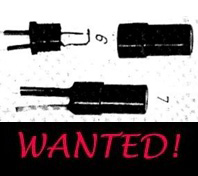
Three point-contact transistors numbered TP1 to TP3 were made by the IPPT PAN in Poland in 1953 and 1954. The same Institute also made the two alloy-junction types TW1 and TM2 although their dates are unknown to me. I know examples of some of these have survived and I would be extremely interested to obtain examples of any for my collection. Jestem zainteresowany otrzymaniem egzemplarzy tych tranzystorów do mojej kolekcji.
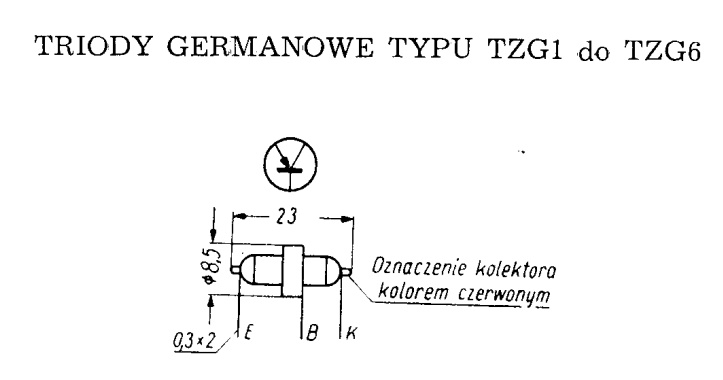
The next development took place at the Industrial Research Institute of Electronics in 1957, where the experimental types TZG1 to TZG6 were made. These are described in the Polish magazine 'Elektronica' from 1957 and look suspiciously similar in shape to the first USSR junction transistors. I speculate that TZG stands for 'tranzystor złączowy germanowe', .i.e, germanium junction transistor. I would be extremely interested to obtain examples of any of these for my collection. Jestem zainteresowany otrzymaniem egzemplarzy tych tranzystorów do mojej kolekcji.

At the end of the 1950s the Industrial Research Institute of Electronics made experimental junction types TZ5 to TZ11. I would be extremely interested to obtain examples of these transistors for my collection.
Jestem zainteresowany otrzymaniem egzemplarzy tych tranzystorów do mojej kolekcji.

At the end of the 1950s the IPPT PAN made a power transistor type TM10 in a cylindrical body. I would be extremely interested to obtain examples of this transistor for my collection.
Jestem zainteresowany otrzymaniem egzemplarzy tych tranzystorów do mojej kolekcji.
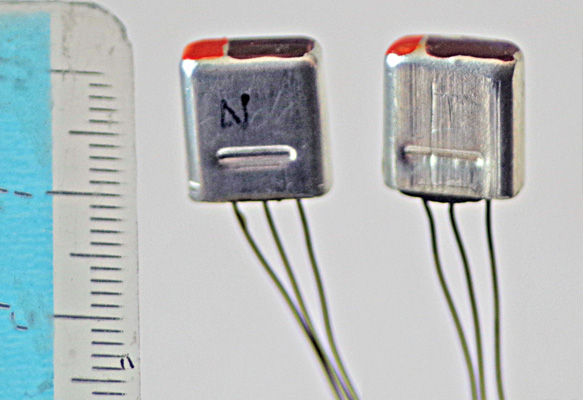
The first industrially produced transistors made in Poland were the TC11 to TC15, produced in limited quantity in the Experimental Plant of the National Institute of Telecommunications at the end of the 1950s. I have been fortunate to obtain two examples of these from a correspondent in Poland. They do not bear a part number, and use a simple largish aluminium body.
There is a page in Polish about these transistors. Google Translate does not work well on it, but if you want to try, just copy a line or two and search for it, then choose the link "Translate this page". In my experience it is better to select a paragraph of text and past that into translate.google.com. The page indicates that this series was developed on the basis of the TW1 alloy transistor from IPPT-PAN mentioned above. Five types are listed but probably only TC11, TC13 and TC15 were produced. The page states these may have been tried in the first Polish transistor radio, the 1959 Eltra MOT-59, but in production it used Philips transistors. This is not mentioned on other pages about the Eltra MOT-59 such as the radiomuseum one. The page also states that the part number was colour-coded on the device. Assuming that the standard electronic colour code was used, the brown colour on the top of mine implies that they are TC11.
I would be interested to obtain examples of any other TC types for my collection.
Jestem zainteresowany otrzymaniem egzemplarzy tych tranzystorów do mojej kolekcji.
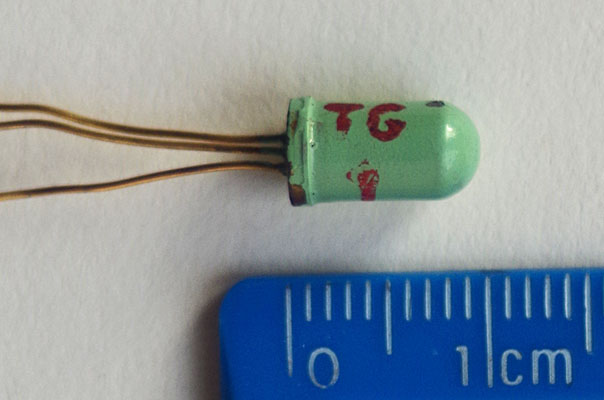
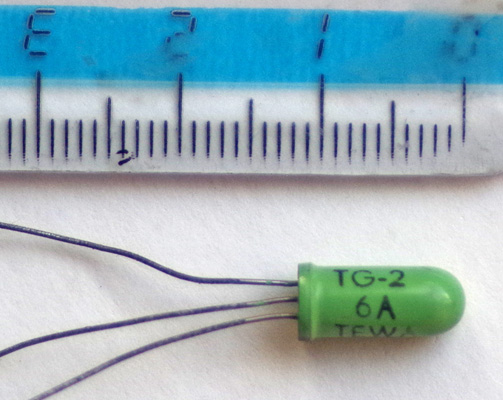
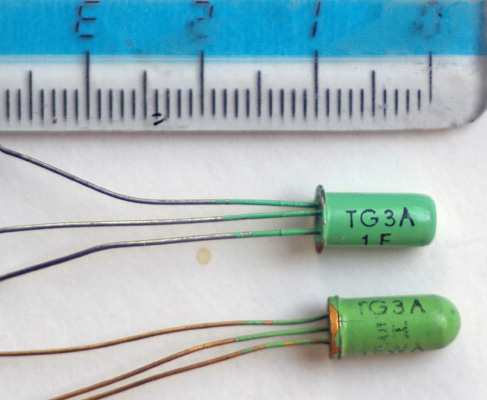
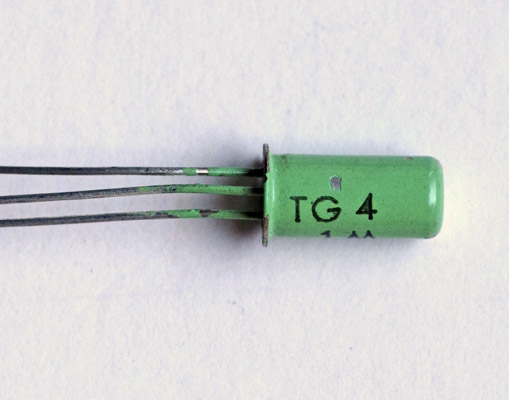
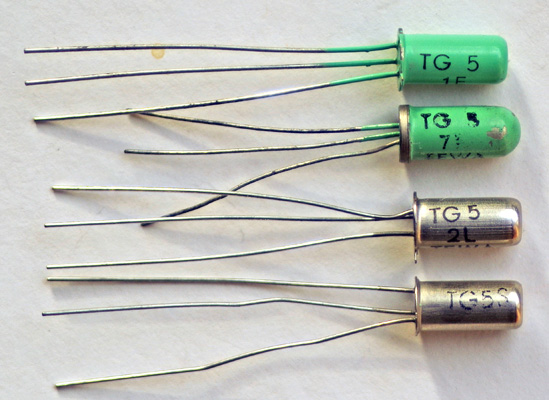
The first mass-produced transistors in Poland were made in 1960 by the company TEWA described above. These are the TG1 to TG5 low-power AF types. The use of the hyphen seems to be optional, and I am unsure of the significance of the suffix A. The series is described (in Polish) on the Polish wikipedia as follows:
The earliest examples use green-painted non-standard cans, with unpainted examples and standard cans being made later. I would be interested to obtain examples of TG1, TG3F, and black examples of any TG type. Byłbym zainteresowany uzyskaniem przykładów TG1, TG3F i czarnych egzemplarzy dowolnego typu TG.
If you can help, please
Very similar, but less frequently encountered are:
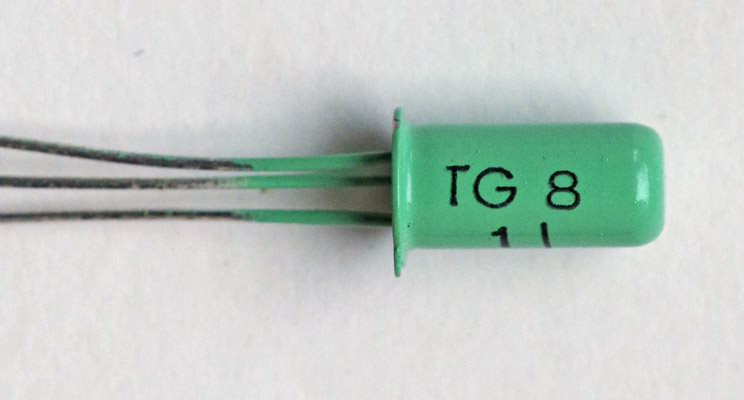
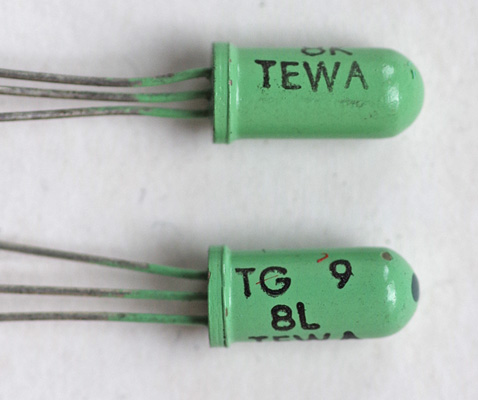
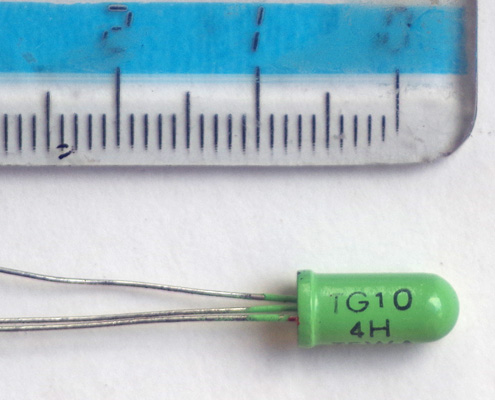
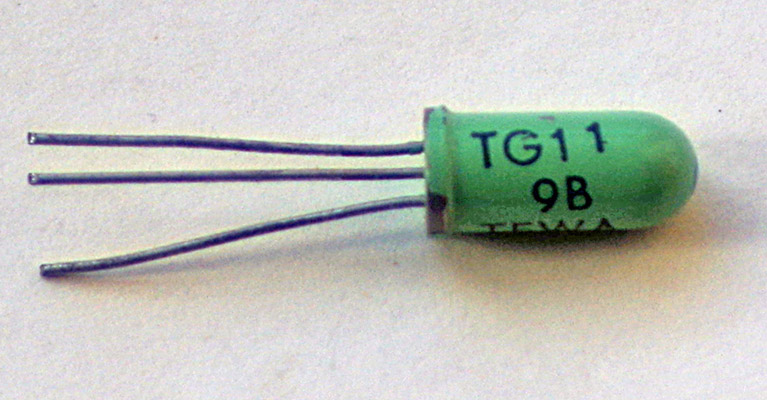
I would be interested to obtain examples of TG6, TG20 and TG21. Byłbym zainteresowany uzyskaniem przykładów TG6, TG20 i TG21.
If you can help, please
There is a Web page that decodes the two-character date code on these early devices. It is a simple year-month system, although the year wrapped once, giving two choices. Update: another page shows the year wrapping twice. This would go well into the CEMI period but I have no CEMI-branded devices with such codes.
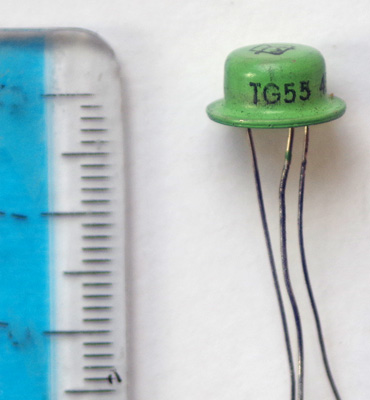
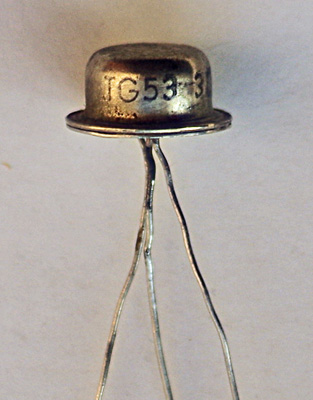
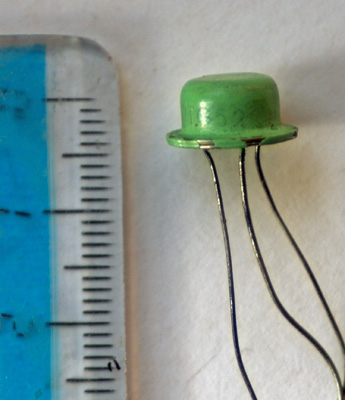
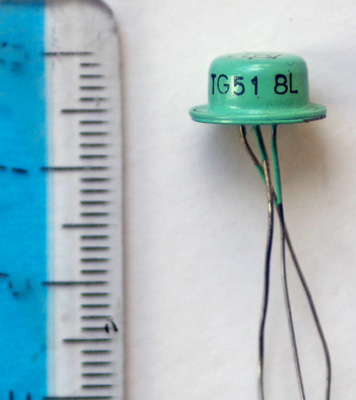
The next series made by TEWA is the medium-power series TG50-55. The series is also described (in Polish) on the Polish wikipedia as follows:
Again the earliest examples are the green-painted ones in the 'top hats', with unpainted examples being made later, and standard TO-5 cans being adopted even later. The images show TG51, a faint TG52, an unpainted TG53 in the older shape, and a TG55. I would be interested to obtain green examples of TG50 and TG53. Byłbym zainteresowany uzyskaniem zielonych przykładów TG50 i TG53.
If you can help, please
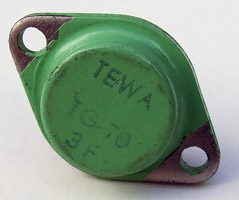
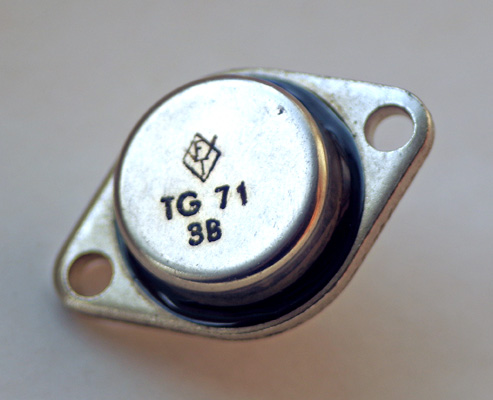
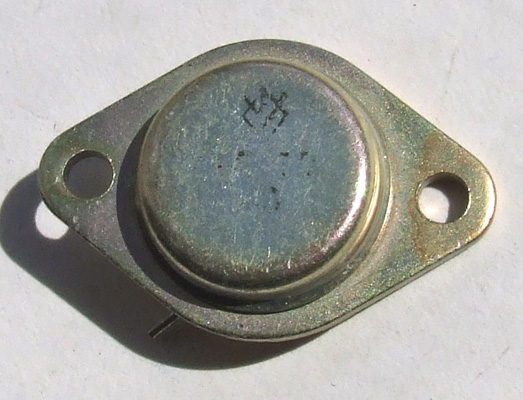
TEWA also made an early high-power series TG70-72 in the TO-3 outline, albeit with non-standard long leads. Again you can read about it (in Polish) on the Polish wikipedia and again the earliest examples are the green-painted ones like my TG70 which are quite rare. My TG70 is coded 3F which must be June 1961, whereas the TG71 coded 3B must be February 1970.
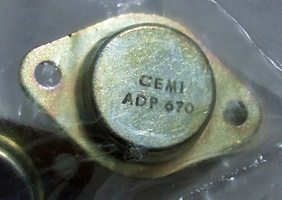
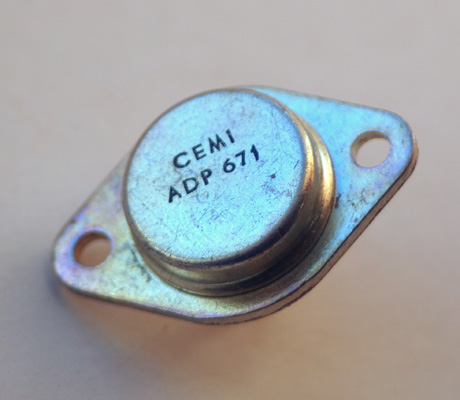
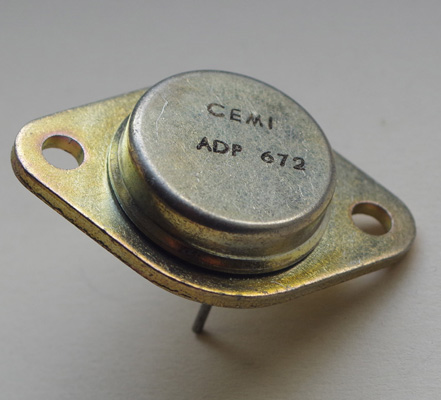
In the final years of production (early 1970s) these types were renumbered as ADP670-672. By this time TEWA had been absorbed into CEMI. Versions were also produced with the suffix 'S' that denotes 'special production' for military, industry and computer purposes. Finally, they were renumbered as ADAP70-72.
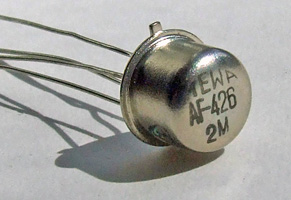
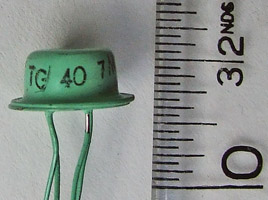
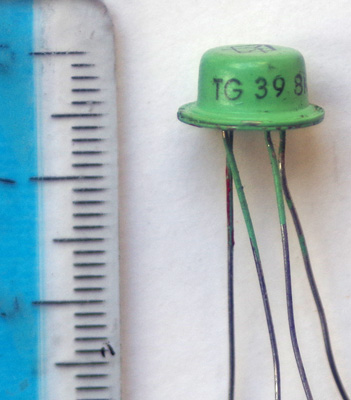
I also have an examples of types TG39 and TG40, in a green-painted top hat. I believe these are part of a series TG37, TG38, TG39, TG40, TG41 comprising RF transistors with typical characteristics Vce = 6V, cut-off frequency> 40MHz, Ic = 10mA. The fourth lead is connected to the can as a screen. Later the outline was changed to a modern one and the series renumbered AF426 - AF430.
I would be interested to obtain green examples of TG37, TG38, and TG41.
Byłbym zainteresowany uzyskaniem zielonych przykładów TG37, TG38 i TG41.
If you can help, please
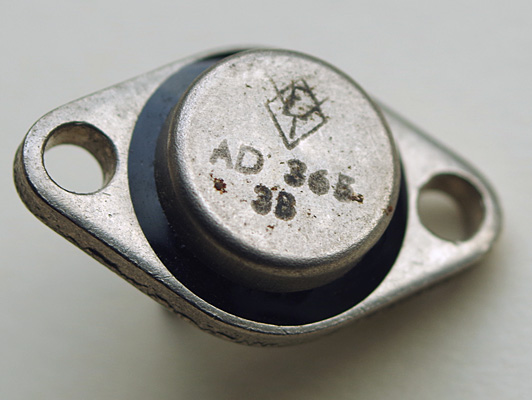
There are also TG60 and TG61 types, medium-power AF transistors in the TO-66 outline. These appear to be rare. The TG60 was replaced by AD365 and ADP665, the TG61 by AD366 and ADP666.

I would be interested to obtain examples of TG60 and TG61. Byłbym zainteresowany uzyskaniem przykładów TG60 i TG61.
If you can help, please
Some of the beautiful Polish transistors above came from the Institute for Nuclear Physics, Cracow, and some were provided by Ryszard in Poland. I am indebted for most of the devices below to Piotr in Poland.
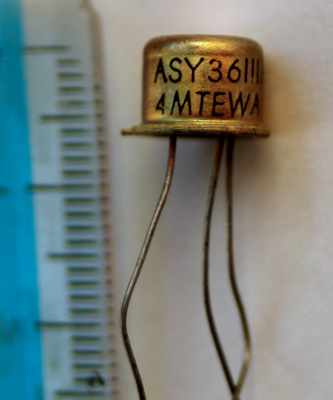
TEWA went on to produce more Westernised transistors such as this ASY36 in a TO-5 outline. They also changed some of their earlier types to use unpainted metallic standard outlines such as TO-1 or TO-5.

The Polish semiconductor industry also made photodiodes. The 1957 Elektronica article lists:
They seem to have used an unusual outline. I have none and would be interested to obtain examples.
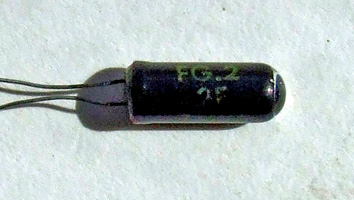
This germanium FG2 was made by Tranzystory Instytutu Łączności (the Transistors Institute of Communications) in the late 1950s. It is included in the 1961 data book mentioned above.
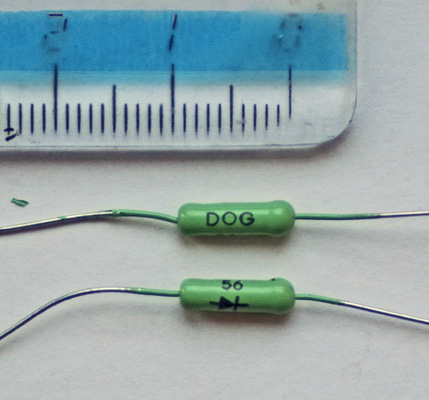
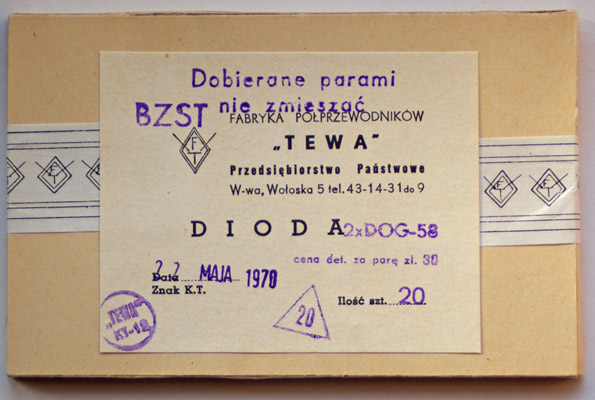
Now we come to Polish germanium diodes, of which there are several series in interesting outlines. The lowest-powered are the DOG series (I think this is an abbreviation for 'diody ostrze germanowe' i.e., germanium point diode), which are high-frequency point-contact diodes using typical axial glass encapsulation. The 1957 Elektronica article lists:
My close-up shows DOG56 and the other image shows a still-sealed box of matched pairs of DOG58.
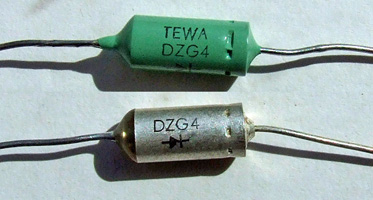
Then Elektronica lists the DZG series of medium-power germanium rectifiers in a metal axial can about 15mm long:
Their peak forward current varies from 300mA to 900mA. My image shows a presumably-older green-painted DZG4 and an unpainted version. These diodes are also found with an S suffix that signifies 'special production' meaning military, industrial and computer purposes.
For completeness, I would like to obtain a DZG1.
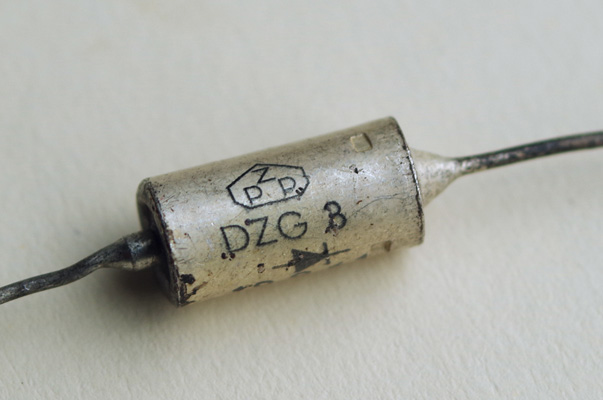
This DZG3 is unusual: it bears the logo ZPP which means that it was made by the other semiconductor factory, PEWA.
I am interested in obtaining other devices marked ZPP.

The 1961 data book lists a short series DOP1 to DOP3 of low-power point-contact diodes. They seem to have a black-painted body with a red dot on it. I have none.
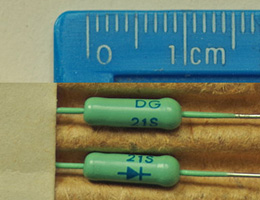
There is a DG series of high-frequency diodes using typical axial glass encapsulation. The 1964 TEWA Katalog contains:
The image shows DG21S. Although these ones are painted the typical TEWA green, they are unbranded. I have wondered if these are in fact gold-bonded types.
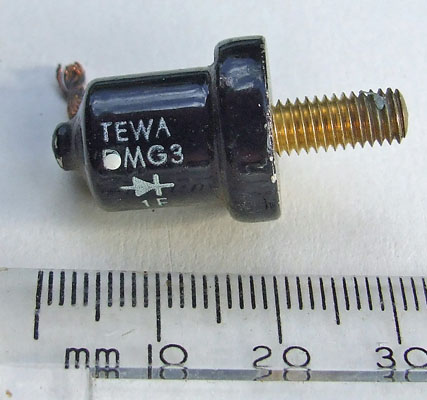
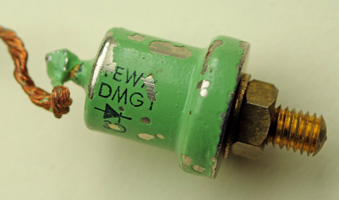
The DMG series are also medium-power germanium rectifiers, but higher-powered than the DZG types, and in a large metal stud package. The 1961 book lists:
Their peak forward current varies from 2 Amps to 5 Amps. Some are green-painted like this DMG1; others are painted a shiny black colour like this DMG3. Again an S suffix can be found.
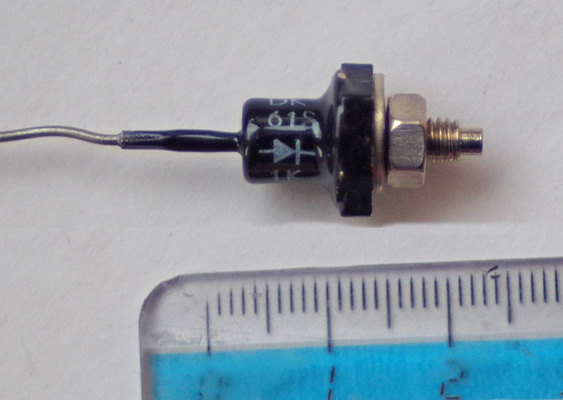
The 1964 TEWA Katalog lists some silicon devices:
The image is of DK61S.
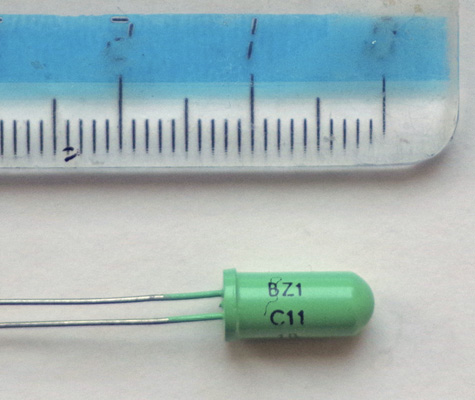
I have this diode which unusually is in the typical low-powered transistor SO2-like outline, and painted green which signifies it is an old example. However it is unbranded and the source informed me that it is a (silicon) Zener diode. The numbering is similar to the DZ41 series in the 1964 Katalog. I have located a partial scan of the 1970 document 'Elementy poprzewodnikowe_odpowiedniki zagraniczne' which is a list of equivalents to Polish devices, and it reveals that this is indeed a Zener diode, part of a BZ1/C series. It also lists series BZ1/D, BZ2/C, BZ2/D, BZ11/c and BZ11/D. All these series have part numbers that are completed by the Zener voltage. If you can provide original data for this device, please
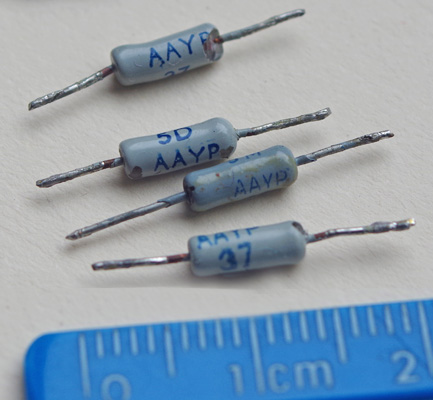
I also have these miniature diodes type AAYP37, for which I have found a scanned Unitra-CEMI datasheet from 1974. They are germanium as the initial 'A' indicates, but I dont have original data for the whole series. If you can provide data for the AAYP series, please
TEWA made more silicon devices, and of course CEMI went on to make many, but for the moment I shall not show any.